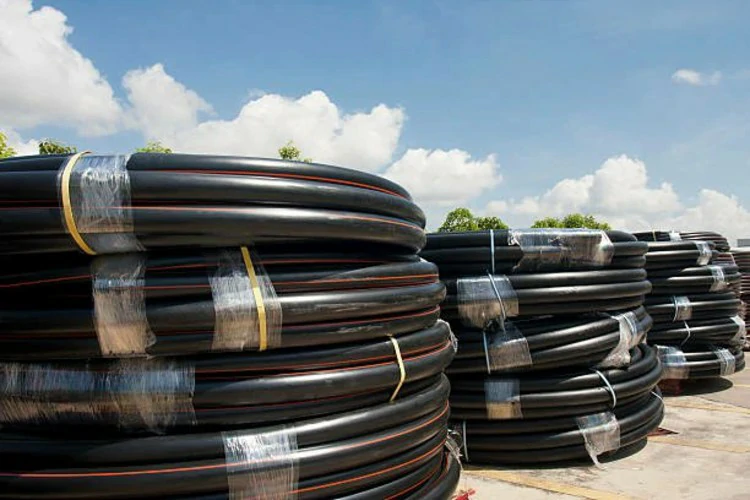In the realm of sustainable construction, High-Density Polyethylene (HDPE) pipes have emerged as a leading choice for eco-conscious builders and developers. This article explores the eco-friendly features of HDPE pipes, shedding light on how they contribute to sustainable construction practices and environmental preservation.
1. Environmental Impact of Traditional Piping Materials
1.1 Challenges with Conventional Materials
Traditional piping materials, such as metal and concrete, pose significant environmental challenges. The extraction, processing, and manufacturing of metals contribute to environmental degradation, while concrete production is associated with high energy consumption and carbon emissions. Additionally, the corrosion of metal pipes and the degradation of concrete over time result in a shorter lifespan, leading to increased waste generation.
1.2 Landfill Pressure and Resource Depletion
The disposal of pipes made from traditional materials adds to the burden on landfills. The non-biodegradable nature of these materials means that they persist in landfills, occupying valuable space and posing long-term environmental concerns. Moreover, the depletion of natural resources required for manufacturing traditional pipes further underscores the unsustainable nature of these materials.
1.3 The Call for Sustainable Alternatives
As the construction industry increasingly recognizes the environmental impact of conventional materials, there is a growing demand for sustainable alternatives. HDPE pipes have emerged as a solution that addresses the ecological concerns associated with traditional piping materials, offering a range of features that align with the principles of sustainable construction.
2. Key Eco-Friendly Features of HDPE Pipes
2.1 Recyclability: A Closed-Loop System
One of the standout features of HDPE pipes is their recyclability. HDPE is a highly recyclable material, and the pipes can be reclaimed and recycled into new products at the end of their service life. This closed-loop recycling system minimizes the environmental footprint of HDPE pipes, reduces the demand for raw materials, and contributes to a circular economy within the construction industry.
2.2 Energy Efficiency in Manufacturing
The production of HDPE pipe requires less energy compared to traditional materials. The manufacturing process involves melting and extruding HDPE resin, consuming considerably less energy than the production of metal or concrete pipes. This energy efficiency not only reduces the environmental impact but also contributes to lower greenhouse gas emissions associated with the manufacturing phase of construction materials.
2.3 Longevity and Reduced Environmental Impact
HDPE pipes’ exceptional durability and resistance to corrosion extend their lifespan, reducing the need for frequent replacements. The longer service life of HDPE pipe minimizes the overall environmental impact associated with the manufacturing, transportation, and installation of pipes. This longevity aligns with the principles of sustainable construction by promoting resource efficiency and waste reduction.
3. Applications in Sustainable Construction Projects
3.1 Water Conservation and Management
HDPE pipes play a crucial role in sustainable water management practices. Their leak-free joints, chemical resistance, and longevity ensure the integrity of water supply systems, contributing to water conservation efforts. Whether in potable water distribution, irrigation systems, or stormwater management, HDPE pipes offer sustainable solutions that align with the goals of environmentally conscious construction projects.
3.2 Infrastructure Resilience and Adaptability
Sustainable construction involves designing infrastructure that can withstand the challenges posed by climate change and evolving environmental conditions. HDPE pipes, with their flexibility and resistance to soil movements and chemical exposures, contribute to the resilience and adaptability of construction projects. This adaptability ensures that the infrastructure remains functional and durable over time.
3.3 LEED Certification and Green Building Standards
HDPE pipes contribute to achieving Leadership in Energy and Environmental Design (LEED) certification and meeting green building standards. The recyclability, energy efficiency in manufacturing, and eco-friendly features of HDPE pipes align with the criteria set by sustainable construction standards. Choosing HDPE pipe enhances a project’s overall sustainability profile and environmental stewardship.
Conclusion:
In conclusion, HDPE pipes stand as a beacon of sustainability in the construction industry. Their eco-friendly features, from recyclability and energy efficiency to longevity and adaptability, make them an integral part of sustainable construction practices. As builders and developers increasingly prioritize environmental responsibility, the adoption of HDPE pipes represents a conscious choice toward a greener, more sustainable tomorrow.
Contact
IFANPLUS is a professional manufacturer of plastic pipes, fittings, and various types of valves in China. If you are interested in our PPR valves, pipes, and fittings, feel free to contact our experts. Explore our diverse range of drainage valve products, including PPR and PVC pipes in German and American standards, as well as various types of valves. We offer a variety of standard pipes to meet your specific requirements. Click here to learn more about our products.
We will reply your email or fax within 24 hours.
You can call us at any time if there is any question on our production.
For more information,pls visit our webside https://www.ifanplus.com/
Pls Mailto: [email protected]






